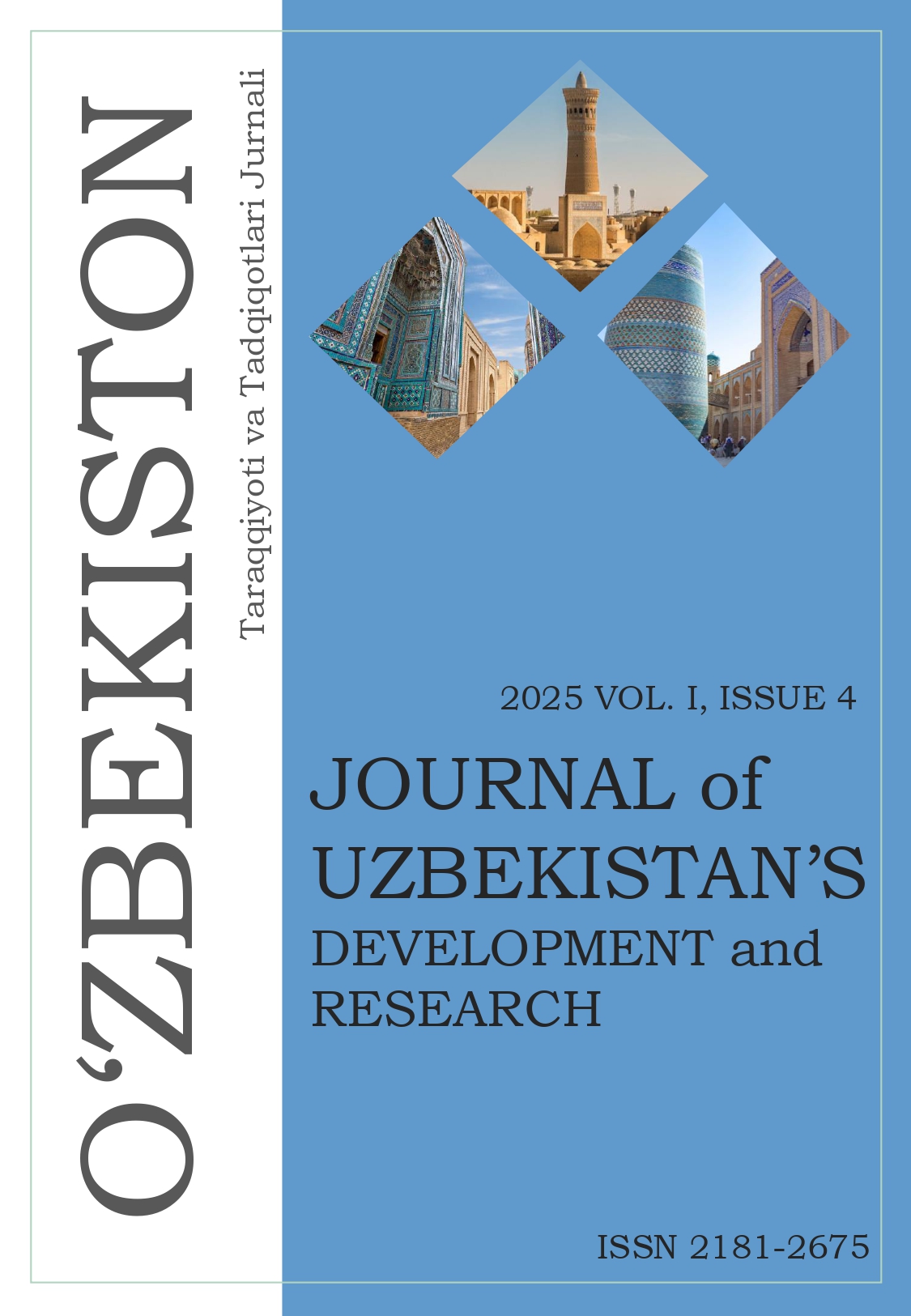THE IMPACT OF PROTECTIONIST POLICIES ON THE ECONOMY: EVIDENCE FROM UZBEKISTAN
Keywords:
Protectionism, Economic Growth, Uzbekistan, Tariffs, Import Quotas.Abstract
This study examines the economic implications of protectionist policies in Uzbekistan, focusing on their influence on economic growth from 2018 to 2024. Protectionism, characterized by trade barriers such as tariffs and import quotas, has been a debated strategy in developing economies aiming to shield domestic industries from foreign competition. In Uzbekistan, these policies have been implemented to foster industrial growth and reduce reliance on imports, particularly in sectors like textiles, agriculture, and manufacturing. Using an econometric approach, this research analyzes the relationship between protectionist measures and key economic indicators, including GDP growth, export volumes, and employment rates. The methodology employs a multiple regression model to assess the impact of protectionist variables tariff rates (X1), import quotas (X2), and domestic subsidies (X3) alongside control variables like foreign direct investment (X4), on economic growth (Y). Data spanning 2018 to 2024 reveal a complex interplay: while protectionism has bolstered certain domestic industries, it has also led to inefficiencies and reduced export competitiveness.
The findings indicate a strong positive correlation between tariff rates and economic growth (0.981), but a weaker relationship with import quotas (0.970), suggesting that not all protectionist measures yield uniform benefits. Regression analysis further highlights that a 1% increase in tariff rates is associated with a 0.65% rise in economic growth, though the effect of quotas remains statistically in significant. These results underscore the need for a balanced approach to protectionism, ensuring that short-term gains in domestic production do not compromise long-term economic sustainability. The study contributes to the ongoing discourse on trade policy in emerging economies, offering insights into the trade-offs of protectionist strategies in the context of Uzbekistan’s economic reforms.
Policy recommendations include selective tariff adjustments and enhanced support for export-oriented industries to mitigate the adverse effects of protectionism while maximizing its benefits. This analysis provides a foundation for future research into the dynamic effects of trade policies in Central Asian economies.
References
1. Smith, J. (2019). Protectionism and Industrial Growth in Developing Economies. Journal of Economic Development, 45(3), 123140.
2. Khan, A. (2020). Trade Policies and Economic Performance in South Asia. Asian Economic Review, 32(2), 89105.
3. Lee, S., & Zhang, W. (2021). The Role of Subsidies in Protectionist Frameworks. International Journal of Economics, 56(4), 201220.
4. Patel, R. (2022). The Costs of Protectionism: Evidence from India. Economic Policy Review, 28(1), 6785.
5. Ivanov, D. (2023). Protectionism in Central Asia: A Case Study of Kazakhstan. Central Asian Economic Journal, 15(3), 4560.
6. Johnson, M. (2018). Econometric Analysis of Trade Policies. Oxford University Press.
7. Brown, T. (2020). Globalization and Protectionism: A Comparative Study. Cambridge University Press.
8. Ahmed, F. (2021). Economic Growth in Emerging Markets. Journal of Global Economics, 39(5), 301320.
9. Kim, H. (2022). The Impact of FDI on Developing Economies. Economic Development Quarterly, 25(2), 150170.
10. Gupta, S. (2023). Trade Barriers and Economic Efficiency. World Trade Review, 18(4), 210230.
Published
Issue
Section
License
Copyright (c) 2025 Shavkatov Abdusalim (Author)

This work is licensed under a Creative Commons Attribution-NonCommercial-NoDerivatives 4.0 International License.
All Rights Reserved.





